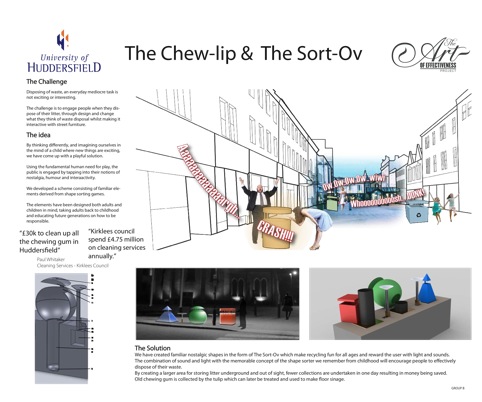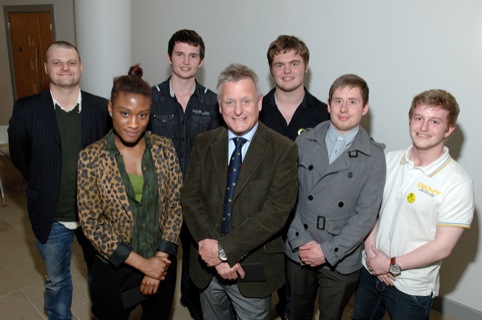Editor’s blog
Every January I vow to get out of the office more to see design first hand and to engage with college projects wherever possible. It makes such good sense. However big the workload back home, we all know both offer amazing inspiration.
By March, I’m usually despairing it will come to pass, but a visit to Huddersfield University last week ticked both boxes for me and reminded me why design is so important.
The project was a 24-hour challenge to Huddersfield students – mainly second years, but across disciplines as diverse as architecture and fashion to illustration and transport design – to address problems they identified within the former mill town through design to make it a better place to be.
Though building on previous challenges laid down by Emma Hunt, dean of Huddersfield’s School of Art, Design and Architecture, the initiative was spear-headed by Elmwood chairman Jonathan Sands under the banner The Art of Effectiveness. As Elmwood – Leeds-based so local to Huddersfield – has been hugely acclaimed for creating effective design over the years, Sands wants to pass on the culture and is writing a book on the subject as well as spawning projects such as this.
Ten teams comprising between five and seven Huddersfield students were each given 24 hours and allocated one of five briefs, concerning the town’s heritage, ways of using paved areas to engage people, handling litter (and discarded chewing gum in particular), beautifying ugly areas (both teams here tackled local underpasses) and transport.

First prize of £100 for each of the team-members went to the poetically titled Chew-lip and Sort-ov, a hugely inventing way of addressing littering and even recycling chewing gum as a coating for street signing. Members of the runner up each received £50 – for a low-cost way of making an underpass less hostile by introducing ‘vintage’ video games on the walls – while the third-prize-winners earned £25 apiece for a simple ‘framing’ system to alert passers-by to old images of new vistas in the town.
The process may sound familiar – the Royal College of Art’s Helen Hamlyn Centre is a past master of time-restricted challenges where bleary-eyed presenters admit that sleep wasn’t an ingredient in the finished idea or design. But the big difference was that teams were mixed randomly, with students of different disciplines working alongside each other. All teams cited this as one of the high spots of the event and it’s one that other colleges can learn from – practitioners too might benefit from more exposure to designers with complementary skills.

Oh and the best part of the Huddersfield experience? Such was Sands generosity, was that everyone taking part got a tenner so the union bar no doubt benefited too.
The winning group included Fashion, Communication and Promotion student Antonia Gatewood, Architecture students Daniel Brotherton, Matthew Knott, and Richard Williams, Product Design student Jamie Fenton and Transport Student Stephen Molnar.
-
Post a comment




